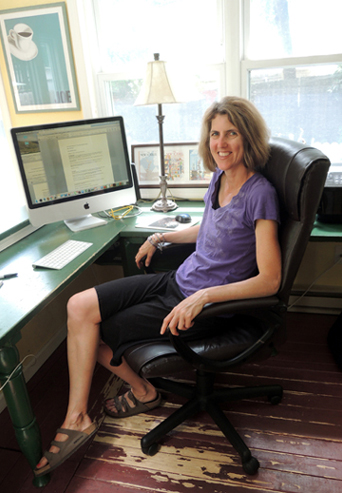
What do Frank Lloyd Wright, Maya Angelou, Winston Churchill, Princess Diana, Che Guevara, and Henry VIII all have in common? Simple. Ellen Labrecque has written their biographies!
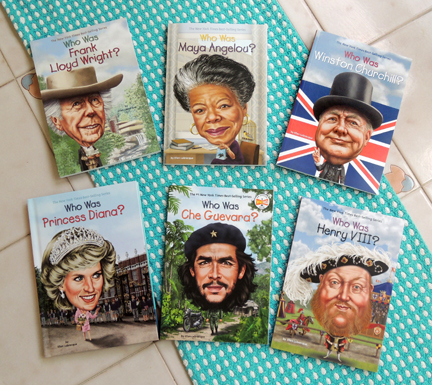 If you are a librarian, teacher, or young history buff, you are most likely familiar with the Who Was? series, which was launched in 2002 by Penguin Books. With over 150 titles and growing (including the spinoffs What Was? and Where Is?), as well as a Netflix TV series based on the books, the Who Was? series is one of the most popular franchises for young readers.
If you are a librarian, teacher, or young history buff, you are most likely familiar with the Who Was? series, which was launched in 2002 by Penguin Books. With over 150 titles and growing (including the spinoffs What Was? and Where Is?), as well as a Netflix TV series based on the books, the Who Was? series is one of the most popular franchises for young readers.
I caught up with Ellen to chat about her Who Was? work, and her experiences as both a researcher and writer of history for children. And, seeing as this post is all about documenting real life, I thought it would be cool to photograph Ellen in her home studio, which she graciously agreed to.

Please tell us a little about yourself!
Hi! I am lucky enough to write my non-fiction children’s books from my home in Bucks County, Pa. I have two kids and a dog named Oscar — who is an awesome writing partner.
 I used to work in New York City as an editor for Sports Illustrated Kids magazine. While I worked for the magazine, I got to meet famous athletes like LeBron James and Shaquille O’Neal. I played basketball and lacrosse in college, but now I am an avid runner. I always start my day off with an early morning jog. Running helps me be a better writer. As I run, I let my mind wander and this helps me come up with fresh ideas and approaches to my writing. Sometimes I also get research done while running. I listened to audio books about World War II when I was writing Who Was Winston Churchill?.
I used to work in New York City as an editor for Sports Illustrated Kids magazine. While I worked for the magazine, I got to meet famous athletes like LeBron James and Shaquille O’Neal. I played basketball and lacrosse in college, but now I am an avid runner. I always start my day off with an early morning jog. Running helps me be a better writer. As I run, I let my mind wander and this helps me come up with fresh ideas and approaches to my writing. Sometimes I also get research done while running. I listened to audio books about World War II when I was writing Who Was Winston Churchill?.
How did you first get involved in the Who Was? book series?
An editor for the series reached out to me about writing some of their books, and I feel so lucky to be part of their team. I have written other non-fiction books, but none as well known as the Who Was? series. The series has appeared on the New York Times best seller list, won many awards, and there is even a Who Was? television show that streams on Netflix.
Describe your research process for these books.
There is a quote from Albert Einstein that says, “If you can’t explain it simply, you don’t understand it well.” I think this is especially true when writing non-fiction books for children. Some of the subjects I have to write it about are complex for adults to understand — and even tougher for kids. When I was writing Who Was Henry VIII? I had to explain in a tight space what the Protestant Reformation was. This is why I spend months researching my subjects before writing a word. I need to become an expert on the subject before I try to explain it simply and directly.
When I research, I read as many books as I can. I also watch documentaries, visit historical places, and interview other experts. I have been known to plan family vacations around my subjects. When I was writing Who Was Frank Lloyd Wright?, we took a trip to Pittsburgh and stopped at Fallingwaters on the way.
 What’s your favorite part of the research?
What’s your favorite part of the research?
My favorite part of researching is learning so many new things. I feel like I am in school everyday, and I love it. I just finished a book on the Amazons of Greek mythology. Revisiting mythology after all these years was fascinating. I also love learning about the childhoods of historical figures. It is good for our readers to hear that these famous people were once kids just like them. It makes them more relatable and interesting.
 What’s your LEAST favorite part of the research?
What’s your LEAST favorite part of the research?
My least favorite part of researching is when I face conflicting information about my subject. The Internet can be a fountain of misinformation and I am constantly trying to track down what is true, and what isn’t true. And if one untruth about a person is published, it can be copied wrong over and over again. I take pride in making sure what I write is 100 percent true. The best way for me to track down the truth is to get as close to the source as possible. This isn’t always easy and is time-consuming, but it is one of the most important aspects of my writing.
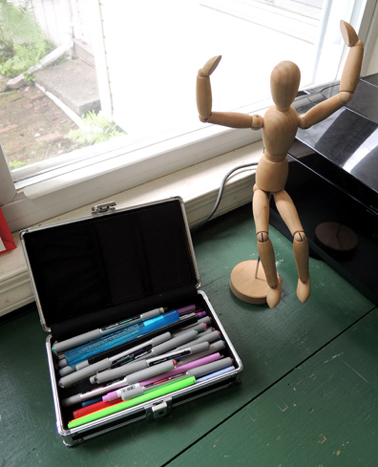 What’s your philosophy on writing and reporting an individual’s personal history, including the not-so-great parts?
What’s your philosophy on writing and reporting an individual’s personal history, including the not-so-great parts?
When I write a biography, I think of telling their story as if I was painting their portrait. I present who this person is, and let my readers decide if they like them or not. Nobody’s perfect — and some of the most famous people are really not perfect. Need I mention Henry VIII and his wives? I tell my readers everything they need to know about a person to help them understand who he or she is and why they are historically important. Kids can handle a lot more than we sometimes give them credit.
You’ve written books on Maya Angelou, Winston Churchill, Che Guevara, Princess Diana, Frank Lloyd Wright, and Henry VIII. Do you have a favorite, and why?
My favorite of the Who Was? books I’ve written is Maya Angelou. I studied her books and poetry in college. She was a woman who did so much in her life and kept on persisting through a lot of rough times. Her prose and poetry are especially amazing — gifts to the world. The powerful sound of her voice is like no other — I could sit and listen to her talk for hours. My favorite of all her poetry is “Still I Rise.” Every time I listen to it I feel like I can overcome anything and accomplish anything. Take a listen.
 Give us one unusual or unexpected fact about your favorite person!
Give us one unusual or unexpected fact about your favorite person!
Maya had something terrible happen to her when she was seven years old. It was so terrible in fact, she did not speak a word again until she was 12 years old. She was completely silent for five years. And yet, once she grew up — she based her life around her beautiful voice and her beautiful words. It was like by being silent all those years, she realized how important words really are.
What are you working on now?
Right now I am working on multiple books about a range of subjects: extreme weather, the Amazons, and the WNBA. I am also writing a children’s fiction book — but I better keep this private for now until it (hopefully) comes to fruition.
I would like to conclude this post with my favorite item from Ellen’s studio. In 2000, she interviewed Shaquille O’Neal for Sports Illustrated Kids at an NBA All-Star Game in Oakland, California. She has one of his size 22 shoes! Here is Shaq’s giant sneaker, with a coffee cup added for scale.
 WOW.
WOW.
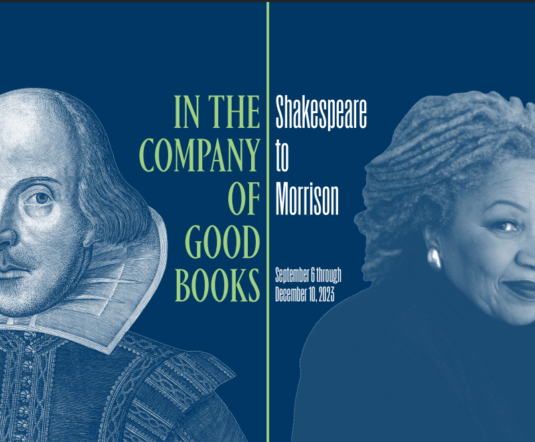 Keep company with literary luminaries this fall! The Department of Special Collections at Princeton University Library invites you to “In the Company of Good Books: Shakespeare to Morrison,” currently on display in the Milberg Gallery of Firestone Library through December 10th.
Keep company with literary luminaries this fall! The Department of Special Collections at Princeton University Library invites you to “In the Company of Good Books: Shakespeare to Morrison,” currently on display in the Milberg Gallery of Firestone Library through December 10th.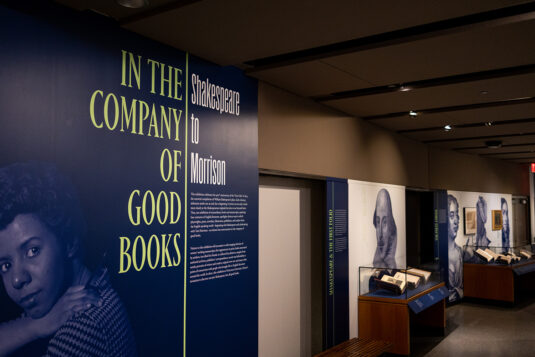
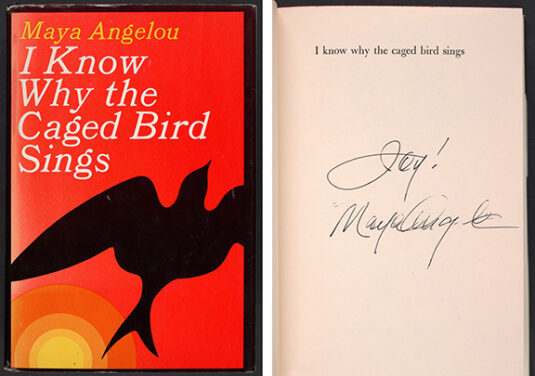
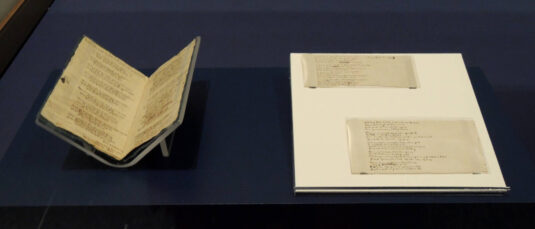 Also in the exhibit are the manuscript notes, sketchbooks, and original storage case of Maria Edgeworth, a prolific novelist for both adults and young readers.
Also in the exhibit are the manuscript notes, sketchbooks, and original storage case of Maria Edgeworth, a prolific novelist for both adults and young readers.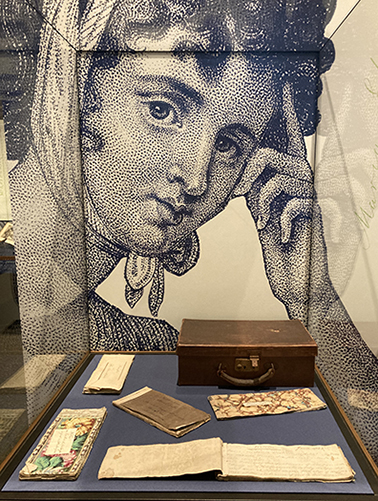 An early edition of Jane Austen’s Sense and Sensibility is displayed, which reminded me of this very interesting fact. When she was only twelve or thirteen, Austen penned The Beautifull Cassandra: A Novel in Twelve Chapters, a tiny work of 465 words total. The Princeton University Press offers a delightful version, with an afterword by Princeton faculty Claudia L. Johnson and artwork by Leon Steinmetz.
An early edition of Jane Austen’s Sense and Sensibility is displayed, which reminded me of this very interesting fact. When she was only twelve or thirteen, Austen penned The Beautifull Cassandra: A Novel in Twelve Chapters, a tiny work of 465 words total. The Princeton University Press offers a delightful version, with an afterword by Princeton faculty Claudia L. Johnson and artwork by Leon Steinmetz.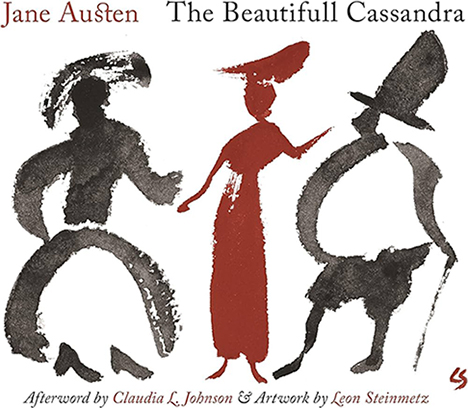 Readers might not be aware that Morrison made significant contributions to children’s literature as well. Collaborating with Slade Morrison, mother and son authored nine books for children. These delightful tales were displayed in Cotsen’s previous exhibit, “They’ve Got Game: The Children’s Books of Toni & Slade Morrison.”
Readers might not be aware that Morrison made significant contributions to children’s literature as well. Collaborating with Slade Morrison, mother and son authored nine books for children. These delightful tales were displayed in Cotsen’s previous exhibit, “They’ve Got Game: The Children’s Books of Toni & Slade Morrison.”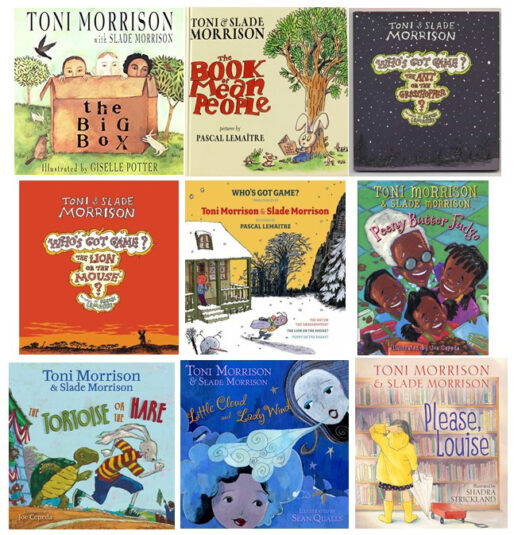 If you are interested in learning more about the exhibit, you will find a digital companion here, and a fantastic Zoom panel with the book’s illustrators here. We also hosted a connected community gallery event this spring, which you can find here.
If you are interested in learning more about the exhibit, you will find a digital companion here, and a fantastic Zoom panel with the book’s illustrators here. We also hosted a connected community gallery event this spring, which you can find here.

 If you are a librarian, teacher, or young history buff, you are most likely familiar with the Who Was? series, which was launched in 2002 by Penguin Books. With over 150 titles and growing (including the spinoffs What Was? and Where Is?), as well as a Netflix TV series based on the books, the Who Was? series is one of the most popular franchises for young readers.
If you are a librarian, teacher, or young history buff, you are most likely familiar with the Who Was? series, which was launched in 2002 by Penguin Books. With over 150 titles and growing (including the spinoffs What Was? and Where Is?), as well as a Netflix TV series based on the books, the Who Was? series is one of the most popular franchises for young readers.
 I used to work in New York City as an editor for Sports Illustrated Kids magazine. While I worked for the magazine, I got to meet famous athletes like LeBron James and Shaquille O’Neal. I played basketball and lacrosse in college, but now I am an avid runner. I always start my day off with an early morning jog. Running helps me be a better writer. As I run, I let my mind wander and this helps me come up with fresh ideas and approaches to my writing. Sometimes I also get research done while running. I listened to audio books about World War II when I was writing Who Was Winston Churchill?.
I used to work in New York City as an editor for Sports Illustrated Kids magazine. While I worked for the magazine, I got to meet famous athletes like LeBron James and Shaquille O’Neal. I played basketball and lacrosse in college, but now I am an avid runner. I always start my day off with an early morning jog. Running helps me be a better writer. As I run, I let my mind wander and this helps me come up with fresh ideas and approaches to my writing. Sometimes I also get research done while running. I listened to audio books about World War II when I was writing Who Was Winston Churchill?. What’s your favorite part of the research?
What’s your favorite part of the research? What’s your LEAST favorite part of the research?
What’s your LEAST favorite part of the research? What’s your philosophy on writing and reporting an individual’s personal history, including the not-so-great parts?
What’s your philosophy on writing and reporting an individual’s personal history, including the not-so-great parts? Give us one unusual or unexpected fact about your favorite person!
Give us one unusual or unexpected fact about your favorite person! WOW.
WOW.